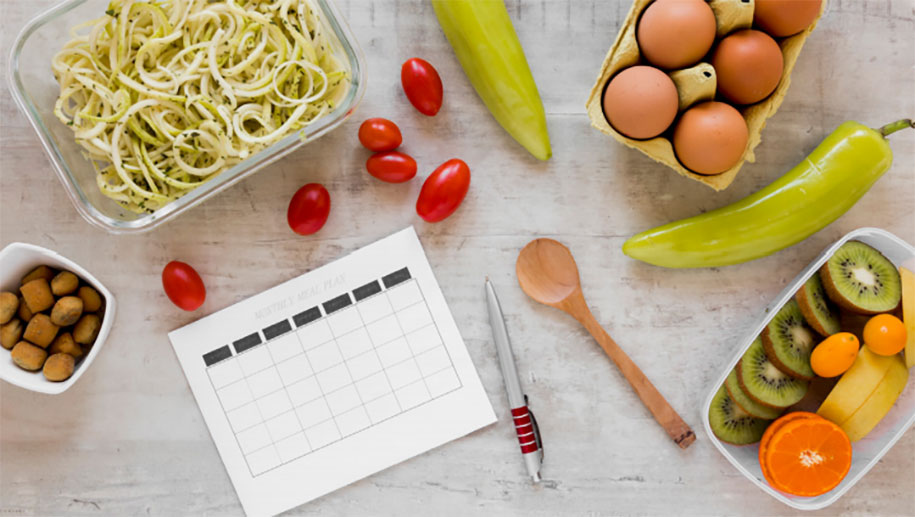Cholesterol is a fat-like substance found in your blood. Your body needs cholesterol to build healthy cells, but high levels of cholesterol can increase your risk of heart disease.
With high cholesterol, you can develop fatty deposits in your blood vessels. Eventually, these deposits grow, making it difficult for enough blood to flow through your arteries. Sometimes, those deposits can break suddenly and form a clot that causes a heart attack or stroke.
High cholesterol can be inherited, but it’s often the result of unhealthy lifestyle choices, which make it preventable and treatable. A healthy diet, regular exercise and sometimes medication can help reduce high cholesterol.
WHAT ARE THE DIFFERENT KINDS OF BLOOD FATS AND WHAT DO THEY DO?
There are several kinds of fats in your blood:
- LDL cholesterol is sometimes called bad cholesterol. It can narrow or block your blood vessels. Blocked vessels can lead to a heart attack or a stroke. Reaching your LDL target is the best way to protect your heart and blood vessels;
- HDL cholesterol is sometimes called good cholesterol. It helps remove deposits from the insides of your blood vessels and keeps your blood vessels from getting blocked;
- Triglycerides are another kind of fat. High triglycerides raise your risk of a heart attack or stroke.
WHAT ARE THE RECOMMENDED TARGETS FOR BLOOD FATS?
Total Cholesterol (TC)
It is directly linked to risk of heart and blood vessel disease.
Goal values:
- 75-169 mg/dL for those age 20 and younger
- 100-199 mg/dL for those over age 21.
High Density Lipoprotein (HDL) “Good cholesterol”
High levels are linked to a reduced risk of heart and blood vessel disease. The higher your HDL level, the better.
Goal value: greater than 40 mg/dL.
Low Density Lipoprotein (LDL) “Bad cholesterol”
High levels are linked to an increased risk of heart and blood vessel disease, including coronary artery disease, heart attack and death. Reducing LDL levels is a major treatment target for cholesterol-lowering medications.
Goal values:
- Less than 70 mg/dL for those with heart or blood vessel disease and for other patients at very high risk of heart disease (those with metabolic syndrome);
- Less than 100 mg/dL for high risk patients (e.g., some patients who have multiple heart disease risk factors);
- Less than 130 mg/dL for individuals who are at low risk for coronary artery disease.
Triglycerides (TG)
Elevated in obese or diabetic patients. Level increases from eating simple sugars or drinking alcohol. Associated with heart and blood vessel disease.
Goal value: less than 150 mg/dL.
WHAT ARE THE RISK FACTORS OF BAD CHOLESTEROL?
Factors that can increase your risk of bad cholesterol include:
- Poor diet: eating saturated fat, found in animal products, and trans fats, found in some commercially baked cookies and crackers and microwave popcorn, can raise your cholesterol level. Foods that are high in cholesterol, such as red meat and full-fat dairy products, will also increase your cholesterol;
- Obesity: having a Body Mass Index (BMI) of 30 or greater puts you at risk of high cholesterol;
- Lack of exercise: exercise helps boost your body’s HDL, or “good,” cholesterol while increasing the size of the particles that make up your LDL, or “bad” cholesterol, which makes it less harmful;
- Smoking: cigarette smoking damages the walls of your blood vessels, making them more prone to accumulate fatty deposits. Smoking might also lower your level of HDL, or “good,” cholesterol;
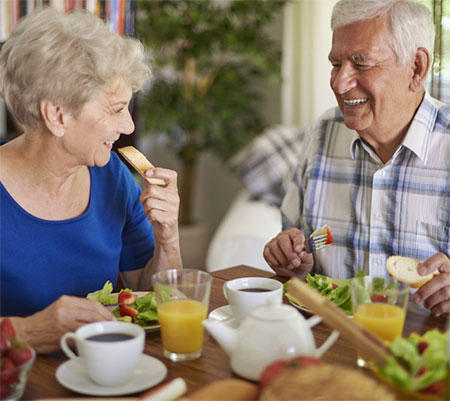
- Age: because your body’s chemistry changes as you age, your risk of high cholesterol climbs. For instance, as you age, your liver becomes less able to remove LDL cholesterol;
- Diabetes: high blood sugar contributes to higher levels of a dangerous cholesterol called Very-Low-Density Lipoprotein (VLDL) and lower HDL cholesterol. High blood sugar also damages the lining of your arteries.
WHAT CAN I DO TO IMPROVE MY CHOLESTEROL?
Here are some steps you can take to improve your cholesterol:
- If you smoke, quit. When you stop smoking, good cholesterol is likely to improve as much as 10%;
- Lose extra kilos and maintain a healthy weight. Watch food portions eaten, frequency of meals and snacking. Eat at least 3 meals per day on regular hours (breakfast, lunch, dinner);
- Eat foods which promote lowering cholesterol such as high fibre foods (legumes, vegetables and fruits) and whole grain foods (oat, barley and other cereals, grain breads, grain flour). Avoid foods high in sugar – soft drinks, cakes, cookies, ice cream and candies;
- Avoid foods high in fat, especially from animal Use good fats in moderation such as from fish, nuts, soy and high omega-3 oils. Preferred methods of cooking are steaming, boiling, baking, and grilling;
- Drink alcohol in moderation. Alcohol increases the fat absorption in the gastrointestinal system and reduces fat digestion that causes increased amounts of cholesterol and triglycerides in the blood;
- Exercise most days of the week. Brisk walking for 30 minutes a day, 5 days a week, is a good goal. Regular exercise can boost “good” cholesterol while lowering “bad” cholesterol.
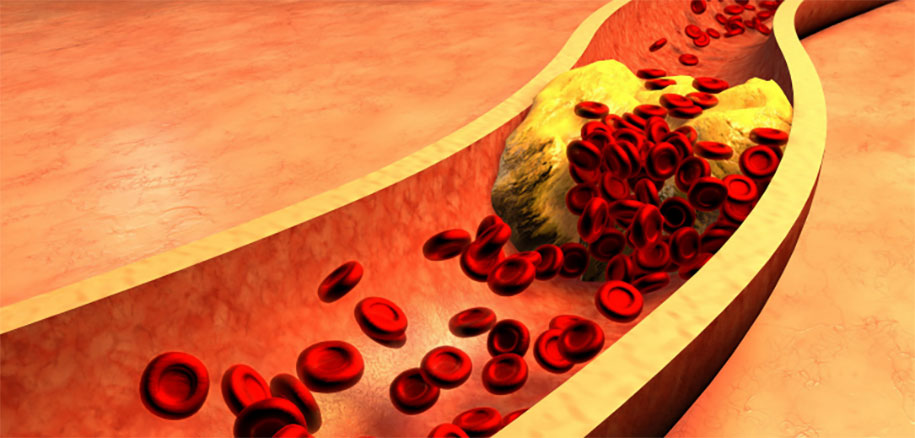
The low cholesterol diet
| Food Group | Foods to be Recommended | Foods to be Limited | Foods to be Avoided |
| Dairy products | Skim milk Non-fat / Greek yogurt Cheese with no more than 3g of fat per 30g (cottage cheese non-fat, Ricotta)
| Half-skim milk/Low Fat milk Low Fat yogurt Sour cream Cheese with 3-5g of fat per 30g and in small amount (Parmesan, Mozzarella, Feta) | Whole milk Whole milk powder Cheese with more than 5g of fat per 30g and in excess amount Entremets and custards Cream cheese Cheddar |
| Meat, fish, egg | Chicken and Turkey (breast part; no skin, no fat) Fish Egg whites | Red lean meat (pork, beef, veal etc.) Chicken legs and wings Duck without skin Egg yolk: MAXIMUM 3 TIMES/WEEK Shellfish | Fatty meats (especially lamb) Offal, tripe, other internal organs Fish roe and caviar Foie gras Hotdogs, sausages, delicatessen (except ham) Lobster, crab roe, shrimp head, oyster, clam Inside commercial foods |
| Starch | Whole grain bread Whole grain rice Plain baked/boiled potato Pasta Legumes, tubers, cereals, semolina etc. | Granola Biscuits Muffins Cornbread | Bread and brioche with butter or oil Chips and French fries Croissants Pastries Egg noodles Commercial foods |
| Vegetables | All
| Commercial foods
Prepared with fat; deep fried | |
| Fruits | All | Crystallized or glazed fruits | |
| Fat products | Corn oil Olive oil Canola oil Sunflower oil Soybean oil Cold-water fish oil Peanut oil Sesame oil Nuts: macadamia, almond, peanuts, chestnuts etc. Avocado | Coconut oil (MCT oil) Coconut milk
| Palm oil Butter and cream Animal fat (lard etc.) Ghee Hydrogenated vegetable oils like margarine Bacon Meat and chicken drippings |
| Sweet products | Sugar, honey, jam, biscuits and cakes | Pastries, pies, biscuits and cakes (made with butter, oil, cream or egg) such as cookies, crumble, apple pie, muffin, pancakes, croissant etc. Chocolate, ice cream | |
| Miscellaneous | Aromatics, herbs, salt Spices (curry, satay, pepper etc.) Condiments (mustard, spicy sauce etc.) | Fast foods Fatty sauces (made with butter, oil, cream or egg) such as Mayonnaise, Béarnaise etc. Fatty meat broths Pork floss 3-in-1 or 2-in-1 beverages, creamer | |
| Beverages | Water, fruit or vegetable juice, fruit syrup, tisane, tea, coffee
| Beer: 1 can 330mL Rum/whiskey: 1 shot 45mL Red wine: 1 glass 150mL Men: 1-2 drinks/day Women: 1 drink/day | Alcohol in excess amount Sodas and sweet beverages in excess amounts Milk shakes, malted milk and chocolate drinks |
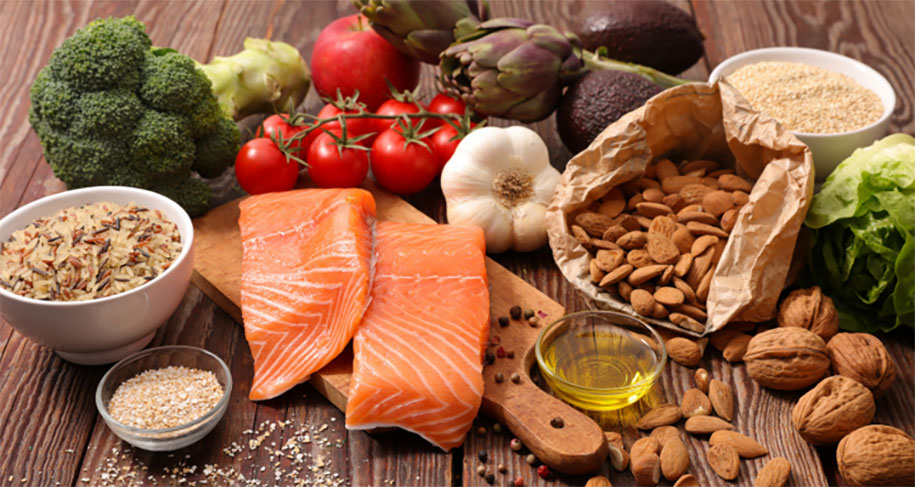
Sample Menu:
| Meals | Western Style | Asian Style |
| Breakfast | 2 pieces whole grain bread/bun/rusk Egg white omelette 1 teaspoon marmalade 1 non-fat / Greek yogurt
Light tea or light coffee (sugar free or with sweetener)
½ cup fresh strawberries | 1 big bowl of Phở soup (avoid fatty meats and broths) with lean meat chicken and vegetables 1 non-fat / Greek yogurt
Light tea or light coffee (sugar free or with sweetener)
½ cup fresh strawberries |
| Morning Snack | 20g of nuts | 20g of nuts |
| Lunch | Vegetable soup 2 pieces bread roll ½ baked chicken breast (60g) without skin Tossed salad with fat free salad dressing Gelatin | Vegetable soup 1 bowl of steamed rice 1 piece of fish stew 1 dish of boiled green leafy vegetables
1 pc dragon fruit slices |
| Afternoon Snack | 1 glass non-fat milk 200mL | 1 glass non-fat milk or soya milk 200mL |
| Dinner | Clear broth soup with vegetables (avoid fatty/oily) 1 cup mashed potato 1-2 slices steamed fish fillet ½ cup corn and carrots 1 cup fresh fruit salad | Clear broth soup with vegetables (avoid fatty/oily) 1 bowl of steamed rice 2 pieces tofu with tomato sauce 1 dish of boiled green leafy vegetables 1 slice avocado |
Cholesterol Content of Common Foods (in milligrams):
| Lean meat/100g | Pork Beef Chicken Fish fillet Shrimp Squid | 63 65 62 36 119 220 |
| Organ meat/100g | Pork Beef Chicken | 253 230 150 |
| Milk/1 cup | Whole milk Low fat milk Non-fat/skimmed milk | 33 18 3 |
| Eggs | Chicken, whole Duck Quail | 174 418 357 |
| Fat/teaspoon | Butter | 11 |
MEDICINES
A healthy lifestyle is the first defence against high cholesterol. But sometimes diet and exercise aren’t enough, and you might need to take cholesterol medications. Cholesterol medications might help:
- Decrease your Low-Density Lipoprotein (LDL) cholesterol, the “bad” cholesterol that increases the risk of heart disease;
- Decrease your triglycerides, a type of fat in the blood that also increases the risk of heart disease;
- Increase your High-Density Lipoprotein (HDL) cholesterol, the “good” cholesterol that offers protection from heart disease.
Your doctor might suggest a single drug or a combination of cholesterol medications. Here’s an overview of benefits, cautions and possible side effects for common classes of cholesterol medications:
- Statins: these medicines lower LDL cholesterol, increase HDL levels, and lower triglyceride levels. Side-effects include muscle soreness, increased blood sugar level, constipation, nausea. If you’re pregnant, you should not take statins;
- Fibric acid derivatives, also called fibrates: these medicines lower triglycerides and raise HDL levels. Main side-effects are nausea, stomach pain, headaches, dizziness;
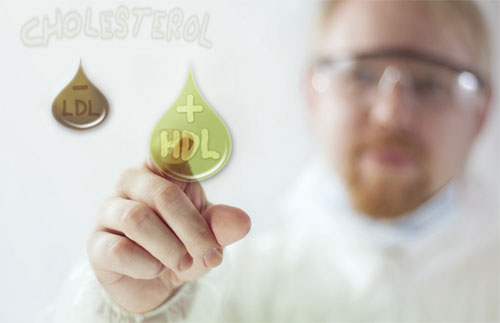
- Nicotinic acid, also called niacin: these medicines lower triglycerides and LDL, and raise HDL levels. Main side-effects are facial and neck flushing, itching, stomach upset, blood sugar increase;
- Cholesterol absorption inhibitors: these medicines lower LDL cholesterol and triglycerides and raise HDL levels. Main side-effects are stomach pain, fatigue, muscle soreness ;
- Bile acid sequestrants: these medicines lower LDL cholesterol and can raise HDL levels. They either have no effect on triglycerides or, in some cases, they can raise triglyceride levels. Main side-effects are constipation, bloating, gas.
This information is for education purposes and is not intended to replace a consultation with specialist doctor. If you have questions concerning your health condition, please discuss them with your doctor.


